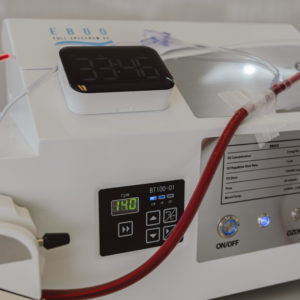3 min|Integrative
Unlocking The Benefits of Craniosacral Therapy
HealthWhat is Craniosacral Therapy? Unpacking the Basics
Craniosacral therapy is an integrative approach to wellness that targets the craniosacral system—a vital framework of membranes and cerebrospinal fluid enveloping your brain and spinal cord. The therapy leverages gentle touch techniques aimed at enhancing the body's inherent ability to self-heal.The Science Behind Craniosacral Therapy
Over a century ago, osteopathic physician Dr. William Garner Sutherland made the groundbreaking discovery of a subtle rhythmic motion within the human body. He found that the bones of the skull are not fixed but have some degree of malleability. This flexibility impacts the flow of cerebrospinal fluid—the vital fluid that cushions and supports our brain and spinal cord.Injuries or traumatic experiences can disrupt this natural fluid motion, leading to long-lasting dysfunctional patterns within the body. Craniosacral Therapy (CST) is a gentle, hands-on treatment that aims to restore the body's inherent rhythmic balance. During a CST session, practitioners utilize their fingertips to detect subtle changes in this rhythm. By applying light, therapeutic touch, they enable the body's innate healing mechanisms to relieve tension and restore healthy cerebrospinal fluid dynamics. This therapy is non-invasive and offers a relaxing experience.
Conditions That Craniosacral Therapy Can Address
1. Alleviating Stress and Anxiety
Stress and anxiety can take a toll on both the mind and body. Craniosacral therapy's calming nature may help reduce stress levels, promoting relaxation and emotional well-being.2. Managing Chronic Pain
For individuals dealing with chronic pain conditions, craniosacral therapy offers a potential avenue for relief. By addressing underlying tension, this therapy might contribute to pain reduction.3. Enhancing Sleep Quality
Sleep is essential for overall health. Craniosacral therapy's ability to relax the body could potentially improve sleep quality in those with sleep disorders.4. Boosting Immune Function
A balanced craniosacral system might positively influence the immune system, supporting the body's defense mechanisms.5. Supporting Emotional Well-being
Emotional health is as important as physical health. Craniosacral therapy's effects on relaxation might contribute to better emotional balance.6. Improving Digestive Disorders
Digestive issues can be uncomfortable. Craniosacral therapy's potential to reduce tension might help alleviate certain digestive disorders.7. Craniosacral Therapy for Athletes
Athletes may benefit from craniosacral therapy as part of their wellness routine, helping with recovery and performance.What to Expect During a Craniosacral Therapy Session
These sessions are generally peaceful and serene. While fully clothed, the therapist employs gentle touches to both evaluate and treat your craniosacral system.Are you looking for support with improving your health and longevity?
Book a consultation with one of our experienced Naturopathic Doctors today!
Book a consultation with one of our experienced Naturopathic Doctors today!
Related Articles

3 min|Dr. Alex Chan
EBOO for Chronic Inflammation: A Natural Approach for Systemic Relief
Regenerative Medicine, EBOO Therapy
3 min|Dr. Alex Chan
EBOO Therapy for Autoimmune Conditions: Exploring the Potential Benefits
Autoimmune Disease, Regenerative Medicine, EBOO Therapy


